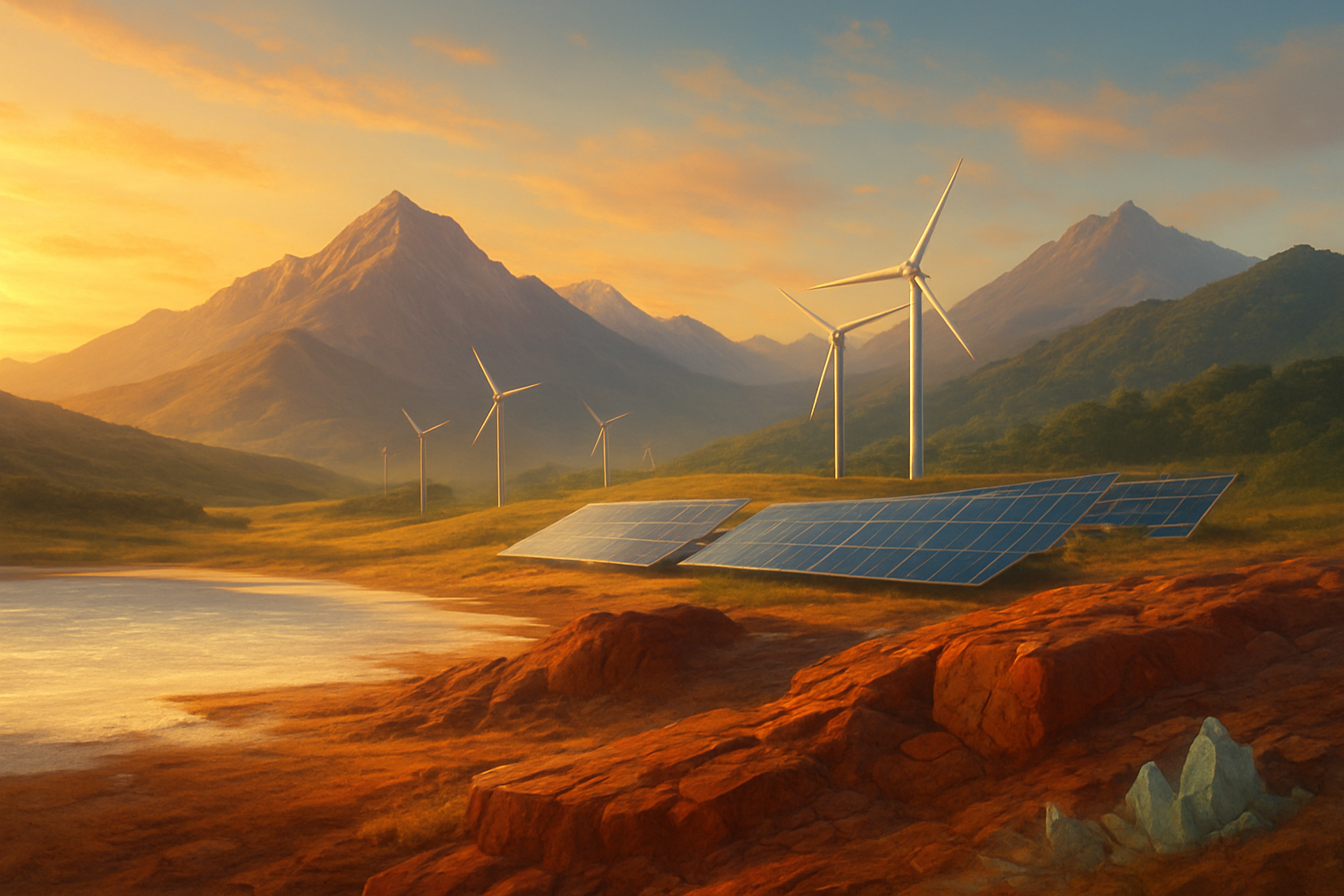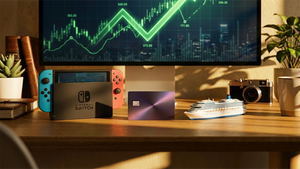
As the global clean energy transition accelerates, South America stands poised as a pivotal region for the supply of critical raw materials, presenting significant investment opportunities in 2025. With unparalleled reserves of lithium, copper, and substantial rare earth deposits, the continent is at the epicenter of efforts to decarbonize the global economy. This strategic dominance positions South America as an indispensable player in the future of electric vehicles, renewable energy infrastructure, and advanced technologies, attracting intense international interest and capital.
The imperative to secure diversified and sustainable supply chains for these essential minerals is driving a surge in exploration, extraction, and processing initiatives across the region. As of November 11, 2025, the continent's vast mineral wealth is not merely a geological endowment but a dynamic economic engine, fueling industrial growth and shaping geopolitical alliances. Investors are keenly observing the evolving landscape, recognizing the long-term potential for substantial returns in a market fundamentally reshaped by the global commitment to a greener future.
A Continent Awakens: The Surge in Critical Raw Material Development
South America's journey to becoming a critical raw materials powerhouse has been marked by a series of significant developments, particularly in the lithium and copper sectors, with rare earths beginning to gain traction.
The "Lithium Triangle"—comprising Argentina, Bolivia, and Chile—continues to hold over half of the world's known lithium reserves, making it a focal point for battery production and electric vehicle (EV) manufacturing.
In Chile, the world's largest lithium reserves (9.3 million metric tons) and a dominant position in copper production have seen a renewed push for state involvement. While Chile remains the second-largest global lithium producer, its government has signaled a move towards greater state control over lithium extraction, aiming to maximize national benefits from this strategic resource. This policy shift, while potentially introducing new complexities for foreign investors, also presents opportunities for partnerships with state-owned entities. For copper, Chile, the top global producer, is projected to rebound significantly in 2025, potentially reaching a record 6 million metric tons, driven by new mine ramp-ups and operational efficiencies. Companies like Codelco (SSE: CODELCO) are at the forefront of these efforts, with ongoing projects aimed at sustaining and expanding output.
Argentina has emerged as a particularly attractive destination for lithium investment due to its more market-open approach. The nation's lithium production, which reached around 18,000 metric tons in 2024, is forecast to surge by 75% to 130,800 tonnes of lithium carbonate equivalent (LCE) in 2025. This significant growth is fueled by new operations and expansions in provinces such as Salta, Catamarca, and Jujuy. Key projects, including those by companies like Allkem Limited (ASX: AKE) and Livent Corporation (NYSE: LTHM), are rapidly scaling up production. This proactive stance by Argentina contrasts with some of its neighbors, drawing considerable foreign direct investment.
Bolivia, despite possessing the world's largest lithium resources (estimated at 23 million tons), has historically lagged in production due to technological and political hurdles. However, 2025 sees a more determined effort, with state-led initiatives and significant deals, such as a $1 billion agreement with Chinese investors to construct two lithium plants, indicating a push towards developing its vast potential. While the state maintains a majority stake in projects, these collaborations signal a willingness to leverage international expertise and capital.
For rare earth elements, Brazil holds the second-largest global reserves (21 million tonnes). While its production has been minimal (20 metric tons in 2024), the global imperative to diversify rare earth supply chains away from China is generating substantial interest in Brazil's untapped potential. Early-stage exploration and development projects are beginning to attract attention, positioning Brazil as a long-term prospect for rare earth production. The initial market reactions to these developments have been largely positive, with commodity prices for lithium and copper remaining robust due to sustained demand from the EV and renewable energy sectors. International entities, including the European Union, are actively seeking to establish partnerships and secure supply, further validating South America's critical role.
Market Movers: Companies Poised for Growth or Facing Challenges
The burgeoning demand for critical raw materials in South America creates a dynamic environment where several public companies are positioned for substantial growth, while others may face challenges if they fail to adapt. The investment landscape in 2025 is particularly favorable for miners and processors with established operations or significant development projects in the region.
Lithium producers are among the clearest beneficiaries. Companies like SQM (NYSE: SQM) in Chile, a major global lithium producer, are well-positioned to capitalize on increasing demand, despite potential shifts in Chilean government policy. Their existing infrastructure and expertise provide a significant advantage. In Argentina, companies such as Arcadium Lithium (NYSE: ALTM), formed by the merger of Allkem and Livent, are expected to see significant production increases. Arcadium's projects in the Lithium Triangle, particularly its Fenix mine and Cauchari Olaroz joint venture, are critical to Argentina's projected 75% growth in lithium output for 2025. Other players like Lithium Americas Corp. (NYSE: LAC), with its Cauchari-Olaroz project, are also set to benefit from the favorable investment climate in Argentina. These companies stand to gain from higher volumes and potentially stable to rising lithium prices driven by EV demand.
In the copper sector, major players with significant operations in Chile and Peru are set for a strong year. Codelco (SSE: CODELCO), the state-owned Chilean copper giant, is expected to see a production rebound, which will bolster its financial performance. Other international mining powerhouses with a strong presence in the region, such as BHP Group (ASX: BHP, NYSE: BHP) with its Escondida mine in Chile, and Freeport-McMoRan Inc. (NYSE: FCX) with operations in Peru, are well-positioned to meet the escalating global demand for copper, which is critical for renewable energy infrastructure and EVs. Their established operations and ongoing investments in efficiency and expansion will likely translate into robust earnings.
Rare earth companies in South America, while currently smaller in scale, represent a long-term growth opportunity. As Brazil begins to explore and develop its vast rare earth reserves, companies involved in early-stage exploration and processing, though not yet widely public, could see significant upside. Investors are watching for emerging players in this space, as global efforts to diversify rare earth supply chains intensify.
Conversely, companies heavily reliant on traditional energy sectors or those unable to adapt to stringent environmental, social, and governance (ESG) standards may face increasing pressure. The rising focus on sustainable mining practices and community engagement means that companies with poor environmental records or inadequate social licenses to operate could encounter regulatory hurdles, project delays, and reputational damage. Furthermore, companies that fail to innovate in extraction and processing technologies, such as Direct Lithium Extraction (DLE), might find themselves at a cost disadvantage. The geopolitical landscape also plays a role; companies with overly concentrated supply chains or those perceived as less aligned with national strategic interests in resource-rich nations could face unfavorable policy shifts.
The Broader Implications: Reshaping Global Supply Chains and Geopolitics
South America's ascendancy in critical raw materials extends far beyond regional economics, profoundly reshaping global industry trends, supply chains, and geopolitical dynamics. This event is not an isolated phenomenon but rather a critical component of the broader global shift towards electrification and decarbonization, a trend that demands unprecedented quantities of lithium, copper, and rare earths.
The continent's growing dominance offers a crucial counter-balance to existing supply chain concentrations, particularly in the context of China's long-standing control over rare earth processing and significant influence in lithium refining. Nations and blocs, notably the European Union and the United States, are actively pursuing strategies to diversify their critical mineral sources, viewing Latin America as a prime partner. This push for diversification is expected to foster new trade agreements, investment partnerships, and technological collaborations, reducing reliance on single-source suppliers and enhancing global supply chain resilience. The potential ripple effects on competitors like Australia, another major lithium producer, and African nations with significant copper reserves, will be substantial, possibly leading to increased competition for investment and market share, or conversely, new forms of collaboration to meet soaring global demand.
Regulatory and policy implications are also significant. Within South America, governments are increasingly recognizing the strategic value of these resources. While some, like Argentina, maintain an open investment environment, others, such as Chile, are exploring greater state participation to ensure national benefits from resource extraction. This divergence in policy approaches will influence investment flows and operational frameworks for mining companies. Internationally, the focus on ESG criteria is intensifying. New regulations and investor pressures demand that mining operations adhere to high environmental and social standards, including responsible water management, land reclamation, and equitable community engagement. Companies that fail to meet these evolving expectations risk project delays, increased operational costs, and reputational damage.
Historically, commodity booms have shaped South American economies, often leading to periods of rapid growth followed by busts. However, the current demand for critical raw materials is driven by a fundamental, long-term global energy transition, suggesting a more sustained period of demand compared to previous, often speculative, commodity cycles. The comparison to past booms, such as the guano boom or early 20th-century copper surges, highlights the importance of robust governance, sustainable resource management, and value-added processing within the region to avoid the "resource curse" and ensure long-term, equitable development. The current focus on developing local processing capabilities, rather than merely exporting raw ore, signifies a maturation in the region's approach to its mineral wealth.
The Road Ahead: Navigating Opportunities and Challenges
Looking ahead, South America's critical raw materials sector is poised for continued expansion, presenting both immense opportunities and significant challenges in the short and long term. For 2025 and beyond, the immediate focus will be on ramping up production capacity for lithium and copper, alongside initial investments in rare earth exploration and processing.
In the short term (2025-2026), we can expect to see further significant capital expenditure in existing and new mining projects across the region. Argentina's lithium sector, in particular, will continue its rapid growth trajectory, with more projects moving from development to production. Chile's copper output is anticipated to stabilize and potentially grow, supported by technological upgrades and new mine developments. The market will likely remain robust, driven by the sustained demand from the electric vehicle and renewable energy sectors. Strategic pivots for companies will involve prioritizing sustainable practices, investing in advanced extraction technologies like Direct Lithium Extraction (DLE) to reduce environmental footprints, and forging strong partnerships with local communities and governments. Market opportunities will emerge not only in raw material extraction but also in value-added processing, aiming to produce higher-grade materials and even precursor components for batteries within South America.
In the long term (beyond 2026), the landscape will likely mature further. We could see the establishment of more integrated supply chains within South America, potentially including battery manufacturing facilities, leveraging the proximity to raw materials. Brazil's rare earth potential is expected to transition from exploration to meaningful production, diversifying the global supply. However, challenges will intensify. Environmental concerns, particularly regarding water usage in arid lithium-rich regions, and the social license to operate will become even more critical. Geopolitical competition for these resources will also remain fierce, requiring South American nations to carefully balance national interests with international partnerships. Potential scenarios include the region becoming a dominant global hub for processed critical minerals, or conversely, facing bottlenecks due to infrastructure limitations or policy inconsistencies.
Strategic adaptations will be crucial for both governments and corporations. Governments will need to refine regulatory frameworks to attract investment while ensuring environmental protection and equitable benefit sharing. Companies will need to demonstrate unwavering commitment to ESG principles, invest in local workforce development, and engage transparently with stakeholders. The development of robust infrastructure, including transportation and energy, will also be vital to support the anticipated growth in mining output.
A New Era for South America's Commodities
In summary, South America's critical raw materials sector is undergoing a transformative period, positioning the continent as an indispensable player in the global clean energy transition. The unparalleled reserves of lithium in the Lithium Triangle, the vast copper deposits in Chile and Peru, and Brazil's significant rare earth potential collectively represent a fundamental shift in global commodity markets. The immediate implications for 2025 are clear: a surge in investment, particularly in Argentina's lithium and across the copper-rich Andes, driven by insatiable global demand for electric vehicles and renewable energy infrastructure.
The market moving forward will be characterized by continued growth, but also by increasing scrutiny on sustainable practices and geopolitical maneuvering. Companies with established operations and those investing in advanced, environmentally friendly technologies, alongside strong community engagement, are best positioned to thrive. The wider significance of this shift lies in the reshaping of global supply chains, fostering greater diversification away from traditional sources and creating new strategic alliances between South American nations and consuming economies. This era marks a potential turning point for South America, offering an opportunity to leverage its natural wealth for sustained economic development, provided it navigates the complexities of resource governance, environmental stewardship, and social equity effectively.
Investors in the coming months should closely watch several key indicators: the progression of major mining projects in Argentina and Chile, particularly their adherence to production targets; the evolution of governmental policies regarding resource nationalization or foreign investment incentives; and the development of sustainable mining technologies. Furthermore, the global demand trends for EVs and renewable energy, coupled with international efforts to diversify critical mineral supply chains, will continue to dictate the pace and direction of investment in this vital region. South America is not just supplying the materials for the future; it is actively shaping it.
This content is intended for informational purposes only and is not financial advice




